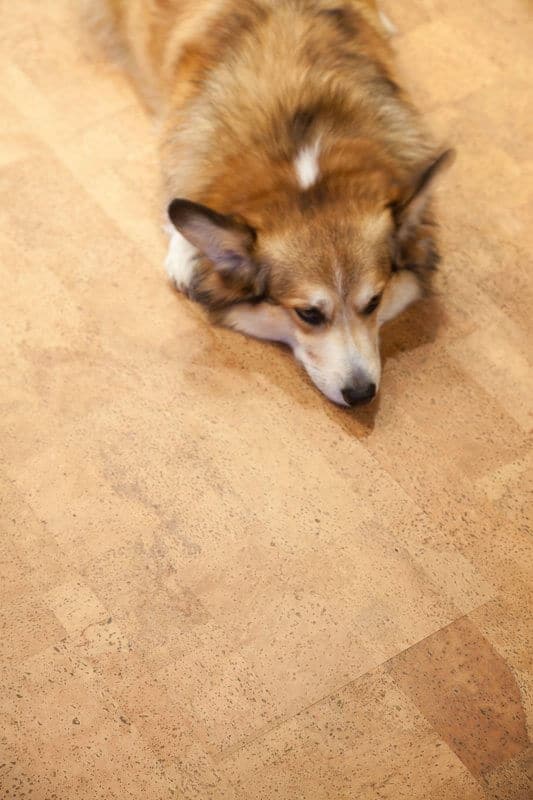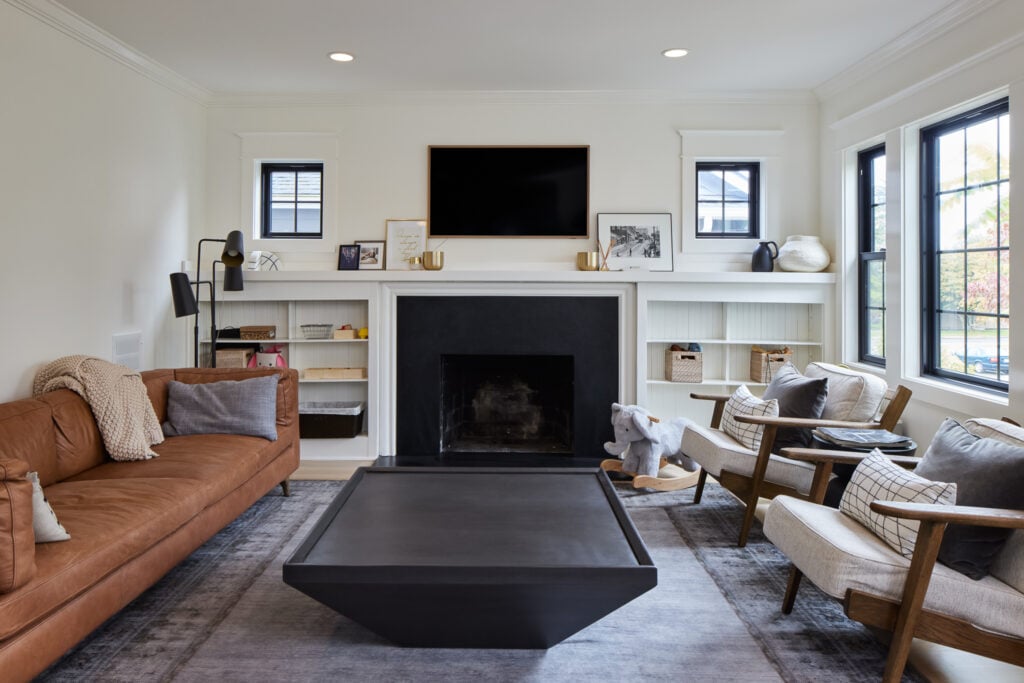If you own a dog, cat or other pet, you know that pet is an integral part of your family. Just like anyone else in the household, accounting for your pet’s needs is a daily consideration. So it makes sense that you should consider that pet’s present and future needs when remodeling your home. From pet-friendly flooring to outdoor access, there’s a handful of things to think about when remodeling with pets. Although creating a pet-friendly home without compromising style can be challenging, it is possible with a little inspiration and planning. These home remodeling tips and examples will help ensure that you create a home your pets will love.
Pet-Friendly Flooring

When remodeling for pets, the first step is choosing the right flooring. Because carpet and solid hardwood floors don’t withstand sharp claws, muddy paws, and potty-training mishaps very well, you’ll need to “scratch” those flooring options off your list.
Instead, choose a water and scratch-resistant flooring material. Pet-friendly flooring should also deliver comfort, traction, and ease of maintenance. There are more options than you think when it comes to pet-friendly flooring, so arefully consider how your specific pet(s) use the home to determine the best fit for your furballs.
The best flooring types for pet owners include:
- Cork (waterproof cork is an option!)
- Ceramic or porcelain tile with a matte finish
- Bamboo
- Luxury vinyl
- Laminate
- Engineered hardwood
Dog-Washing Station

A dog-washing station can be an invaluable part of your home, espeically if your pet is light in color, prone to getting dirty and/or your décor is on the lighter side. Keep your pet and your home cleaner by creating a specialty dog-washing station. It can also double as a utility sink!
Many pet owners put their dog bathing area in a mudroom. If you don’t have a mudroom, consider incorporating a dog-washing station into your laundry or bathroom remodel instead.
If a separate dog-washing station isn’t feasible, you can always go with one of these dog-washing design hacks:
- Replace your old tub/shower combo with a walk-in shower.
- Install an open-concept shower without doors.
- Add a secondary handheld showerhead near the floor or install a shower hose with good reach.
- Use a large drain to help prevent pet hair clogs.
Pet Doors (for Both Dogs and Cats)

Much like humans, your furry family members love their freedom while spending quality time outdoors. A pet door is an ideal way to encourage your dog or cat to exercise (or do their “business”) outside while you’re at work or when no one is home. They even make pet doors, like the one above, that can be programmed to open only for pets who are allowed outdoors. A special tag on their collar can give one pet access through the pet door, while keeping your other flight risk pet inside. They also make glass storm doors with dog doors already built-in.
Pre-made pet doors are available with many options. If you choose a custom pet door, instead of an off-the-shelf design, you can customize it by:
- Painting it the same color as your people door
- Using it to give your older dog easy access to a ramp or porch
- Turning it into a grand entryway with a custom walkway, pet welcome mat, side lamp lighting, mini shrubs, etc.
Cat-specific doors are also a great way to help your feline friends access the outdoors or a concealed litterbox. A small, well-placed cat door—in either a door, wall or cabinet—can keep a litterbox behind a closed door while still accessible to your cat. No more litter getting tracked around the house!

Built-In Pet Feeding Area

As the heart of the home, most pet owners want their cuddly companions to eat alongside everyone else in their kitchen. But pet dishes can be problematic in busy spaces. Spilled food and water can easily get tracked all over your once-beautiful floor.
A simple solution that won’t “eat up” valuable floor space is a built-in feeding station under the cabinetry. A built-in feed station will allow you to keep your kitchen cleaner and tuck pet bowls out of immediate sight. When placed in the lower cabinets, you can also keep pet food and supplies organized in an adjacent drawer for easy access. Adding a few in-cabinet storage accessories—like a Super Lazy Susan, concealed pet bowls, or a tilt-out food storage bin—will make feeding hungry pets even more manageable.
However, your pet feeding station doesn’t have to be in the kitchen. Some homeowners with large dogs choose to create a small alcove off the kitchen. An adjacent mudroom or laundry room can make a great spot. For added convenience, designate shelves and drawers inside cabinetry for storing your pet’s food and grooming supplies neatly out of sight.
Built-In Pet Bed
Most veterinarians would agree that it’s healthy for your pet to have at least one dedicated sleeping area. Dogs sleep, on average, 50% of the day. Cats sleep, on average, 15 hours per day. While some owners use crates for their pets to sleep in, those can be unattractive options that take up a lot of space. A more stylish, space-saving alternative is a built-in pet bed.
Pet beds can easily be incorporated into shelving, cabinetry, furniture and other built-in design elements (like an alcove or under-stair nook). This option provides you as a homeowner with several advantages over bulky crates and loose dog beds. For starters, no more tripping over pet beds that have moved out of place. You can also use your remodel as an opportunity to create designated sleep space for your pet in multiple rooms throughout the house, keeping them off your human furniture (i.e. couch or bed).
When designing your built-in pet bed, use these guidelines to keep it safe and practical:
- Choose an area where your pet will feel connected to the action, but out of the way.
- Anchor the structure to the floor and/or wall.
- Design the opening at least two times the width and standing height of your pet.
- Ensure the bottom material is sturdy enough to support a minimum of 1.5X your pet’s weight.
- Add a hinged front or hinged top panels for easy access when cleaning.
Design-Build Home Remodeling Experts
Finding the best contractor for your pet-friendly home remodeling project is essential. Do your research, ask for references, get written estimates, and check online reviews posted on Yelp, Google, or Houzz. Don’t forget to talk to your contractor about how to keep your pet safe during the remodel–construction isn’t the most pet-friendly activity so it’s important to discuss a plan prior to the remodel starting. Below is a gallery of some of our two- and four-legged clients over the years:




To get started bringing your next home improvement project to life, tell us more about your objectives today via our online form.






